Caring for Ephemera
by
Bob Brooke
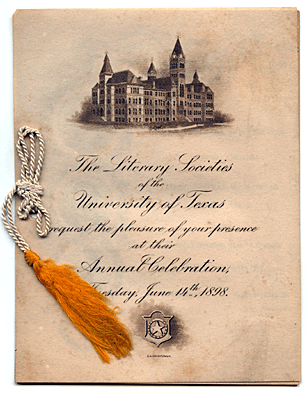 Before
looking into ways of caring for ephemera, it’s important to understand
just what the term includes. Ephemera is anything printed on
paper—magazines, postcards, stock certificates, old deeds, etc. And
while some people may include art prints in this category of
collectibles, they’re best kept separate. (Link to Caring for Prints). Before
looking into ways of caring for ephemera, it’s important to understand
just what the term includes. Ephemera is anything printed on
paper—magazines, postcards, stock certificates, old deeds, etc. And
while some people may include art prints in this category of
collectibles, they’re best kept separate. (Link to Caring for Prints).
Organizing an ephemera collection can be done in several ways. If your
collection consists of a variety of formats, you might choose to
organize by form. For instance, all postcards would be filed together
and all posters, illustrated billheads, chromolithographs, etc. would,
likewise, be kept together. On the other hand, you might want to
organize your collection by what the items illustrate. For example, a
collection of paper ephemera that has been assembled to show different
kinds of fish would be organized by the sort of fish shown, regardless
of what the depictions were on. Finally, you might want to organize your
collection chronologically.
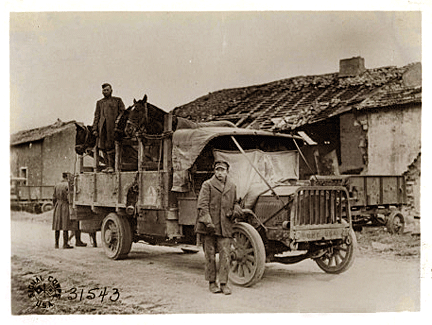 Large
collections like those in museums or libraries are often organized by
format. Because they serve a wide variety of researchers, it’s difficult
for them to anticipate what topic each user will want to study. In
addition, museums and libraries generally have the space that’s needed
to house different formats separately. Consequently, databases or
indexes help researchers to find what they need. Large
collections like those in museums or libraries are often organized by
format. Because they serve a wide variety of researchers, it’s difficult
for them to anticipate what topic each user will want to study. In
addition, museums and libraries generally have the space that’s needed
to house different formats separately. Consequently, databases or
indexes help researchers to find what they need.
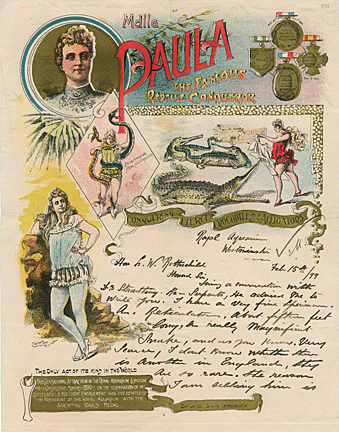 The
categories or fields you choose when creating a database are only
limited by your imagination. One for trade cards, for example, might
contain the name of the firm that advertised on the card and its
address, the date of the trade card, the card's printer and his address,
the name of an agent for the product if there was one, subjects
describing goods advertised, and so forth. Allowing for a free text
field gives you an opportunity to describe the trade card further,
adding particulars that predefined categories don’t allow. You might
also include a thumbnail image of each item with its associated listing. The
categories or fields you choose when creating a database are only
limited by your imagination. One for trade cards, for example, might
contain the name of the firm that advertised on the card and its
address, the date of the trade card, the card's printer and his address,
the name of an agent for the product if there was one, subjects
describing goods advertised, and so forth. Allowing for a free text
field gives you an opportunity to describe the trade card further,
adding particulars that predefined categories don’t allow. You might
also include a thumbnail image of each item with its associated listing.
To store your collection, you should use acid free folders and boxes and
high quality plastic enclosures. In addition, particular attention needs
to be paid to the temperature and humidity in which a collection of
paper ephemera is stored. Considering that personal paper ephemera
collections are mostly kept where people live, a stable temperature of
68-70 degrees with relative humidity at 40-50 percent is recommended. In
addition, items should be away from direct light, both sunlight and
manmade illumination, to prevent them from discoloring or becoming
brittle.
You might consider displaying items from your collection in your home or
office. These should be matted and framed with protective backing.
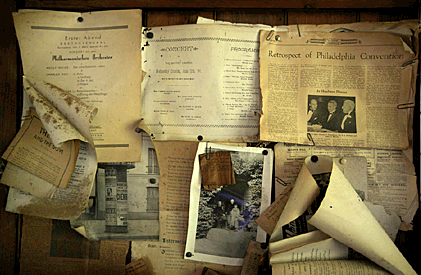 You
collect these items because we want to look at, study, and enjoy what
you have. In order to ensure that your collections will last, it’s
important to follow a few simple rules in handling. First and foremost,
clean and dry hands are very important. To avoid staining and attracting
insects, food and drink should not be consumed near collections;
pencils, not ink pens, are for note taking; and "sticky notes" should be
avoided because they leave harmful residue. Finally, never trace or
write on top of your paper ephemera. You
collect these items because we want to look at, study, and enjoy what
you have. In order to ensure that your collections will last, it’s
important to follow a few simple rules in handling. First and foremost,
clean and dry hands are very important. To avoid staining and attracting
insects, food and drink should not be consumed near collections;
pencils, not ink pens, are for note taking; and "sticky notes" should be
avoided because they leave harmful residue. Finally, never trace or
write on top of your paper ephemera.
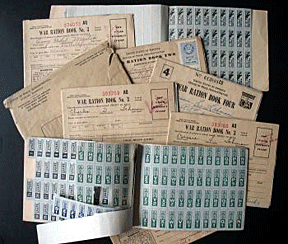 For
long-term care of ephemera, consider three main things—conservation,
environment, and storage. For
long-term care of ephemera, consider three main things—conservation,
environment, and storage.
Conservation are those efforts you take to preserve a document or
restore a damaged one. Conservation includes repairs to documents, de-acification
of paper and efforts to ensure the long time survival of ephemera. You
should not undertake conservation of items in your collection yourself,
but instead use the services of a qualified paper conservator.
Follow these recommendations from the Library of Congress for
establishing the right environment for ephemera:
-
Store
paper materials in dark, cool, relatively dry locations. Aim for 35%
relative humidity and below 72° F.
-
Avoid
light, heat and dampness.
-
Attics, bathrooms and basements are to be avoided.
-
Inside
walls are drier than outside walls, where moisture can collect.
-
High
humidity can lead to the development of foxing (small brown
disfiguring spots in paper) or mold growth.
-
Use UV
protection for displayed items that are subject to exposure to
direct sunlight, fluorescent bulbs or long term lighting.
-
Paper
materials should be protected from dust and dirt.
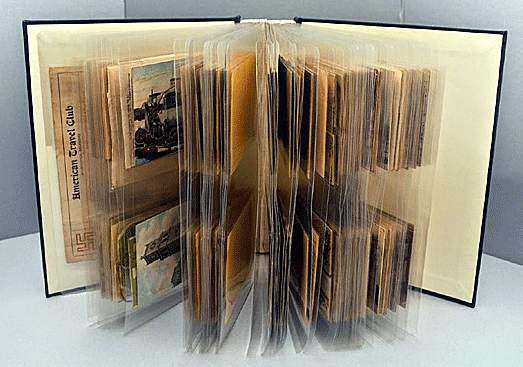
As for storage, it’s
best to store paper items flat, rather than folding and unfolding.
Paper materials may be stored in acid-free alkaline folders,
polyester film folders or alkaline mats. Ecapsulation in Polyester
Film is the most highly recommended storage environment.
For mounting, use foam core backing that has a 100 percent archival
cotton rag surface.
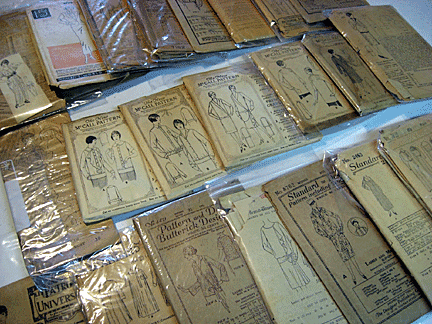 According
to the US Library of Congress, the most preferred material for
preserving valuable documents is uncoated archival quality polyester
film, such as Mylar® type D. or equivalent material Melinex® 516.
Polyester film is a clear, inert plastic that provides excellent
support for fragile paper. According
to the US Library of Congress, the most preferred material for
preserving valuable documents is uncoated archival quality polyester
film, such as Mylar® type D. or equivalent material Melinex® 516.
Polyester film is a clear, inert plastic that provides excellent
support for fragile paper.
Mylar® is an exceptionally strong transparent film that is resistant
to moisture, pollutants, oils, and acids. It contains no volatile
chemicals which will migrate to the surface of the paper and cause
damage. With a life expectancy of hundreds of years, Mylar® will
outlast most other plastics. In addition, along with the brilliance
and clarity of Mylar® which enhances the appearance of any paper
collectible, it is an effective barrier against acidity which is the
primary cause of paper deterioration.
To read
more of my articles, please
visit
my Web site.
<
Back to Caring for Your Collections
Archives
Next Article >
|
